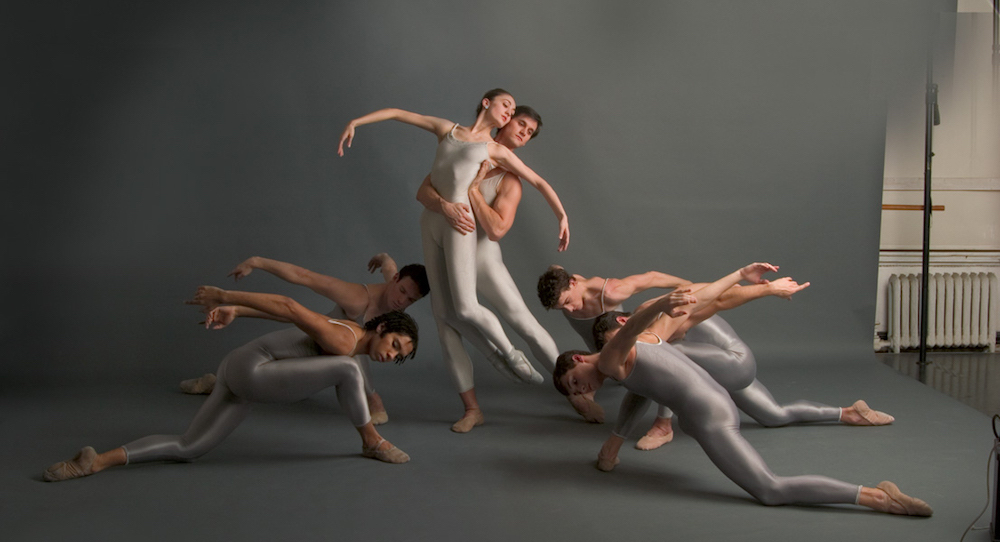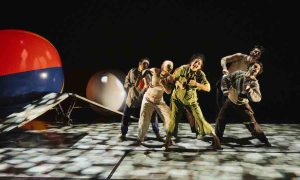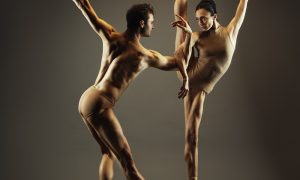Dance is undeniably a highly handed-down tradition. The artists whose work is preserved and honored were most often innovators in their time. Limited resources – amongst individuals, families and organizations – can unfortunately block access to this tradition. Sometimes, however, those with access to the tradition find ways to expand access to dance legacy, while honoring and strengthening, rather than degrading, the integrity and longevity of said legacy. The 2018-2019 Joffrey/Arpino Festival is a perfect example of this viable sharing.
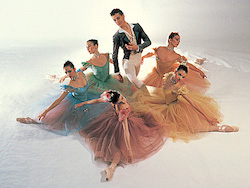
Joffrey Ballet in Gerald Arpino’s ‘Birthday Variations’. Photo by Herb Migdoll.
Here, Dance Informa speaks with Charthel Estner, executive director of The Gerald Arpino Foundation, in order to learn more about this festival. She explains how it’s a year-long effort to honor the life and legacy of Gerald Arpino and Robert Joffrey, on the 10th anniversary of Arpino’s passing and the 30th of Joffrey’s. As a key part of this effort, licensing fees for these two choreographers’ works will be significantly reduced.
Additionally, companies are being sought out – across the United States and internationally – to dance Arpino and Joffrey works in 2018 and 2019. Working with Estner on this effort are Nicole Duffy Robertson and Trinette Washer, co-chairs of the Celebration Committee of The Gerald Arpino Foundation. The overall Foundation’s mission is “preserving and promoting the choreographic works of Gerald Arpino and Robert Joffrey while maintaining the integrity of the works through the highest level of artistic excellence.”
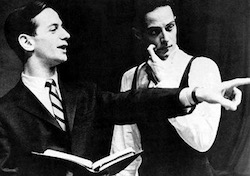
Robert Joffrey and Gerald Arpino. Photo by Jim Howell.
“The board has also been so supportive,” adds Estner. She explains how the Foundation’s 16-member Board includes former Joffrey dancers, artistic directors of companies across the U.S., and non-dance professionals such as attorneys.
Apart from that confluence of numbers of years since their passing, paving the way for this festival, how else did these men align? How did they and their work perhaps differ? First, they had a close personal and a close working relationship.
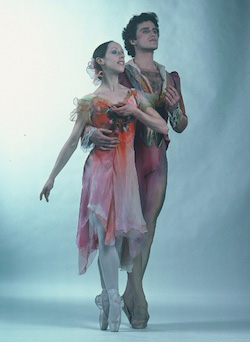
Francesca Corkle and Greg Huffman in Joffrey’s ‘Remembrances’. Photo by Herb Migdoll.
Estner clarifies how Arpino was a seminal dancemaker, with a key goal of creating works of dance art that can be accessible to all people. Joffrey also choreographed many commendable works. He also wanted dance to be widely accessible, but at the same time was quite devoted to the lasting integrity of the classical tradition.
In terms of movement aesthetic, Estner explains how Arpino quite uniquely and extensively explored the torso’s possibilities. Joffrey’s style was more in the Romantic classical ballet tradition, yet used the torso in fresh, inventive ways. Estner explains how Joffrey did look to the past but also to the future. For instance, he saw the potential in Twyla Tharp and helped her on the path toward whom she’s become.
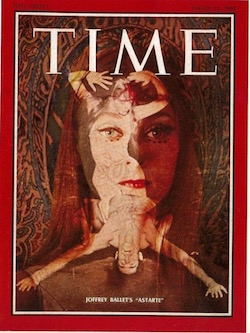
Trinette Singleton in Robert Joffrey’s ‘Astarte’ on the cover of ‘Time’. Photo by Herb Migdoll.
Speaking about the movement of both men, she asserts that it’s more than a style; it’s a technique. “[Learning the technique] is a major part of passing the legacy on!” Estner states. This technique tradition is part of what The Gerald Arpino Foundation seeks to preserve. For instance, affiliated repetiteurs are former Joffrey dancers. The more companies they teach Arpino and Joffrey works, the more chance the works have to live on not only on video but also in living and breathing bodies.
This is a key advantage of this festival, to “have a broad range of companies to present these works, to help honor and preserve the work of Mr. Joffrey and Mr. Arpino,” explains Estner. These companies span the U.S., including The Joffrey Ballet (Chicago, IL), Oklahoma City Ballet (Oklahoma City, OK), Ballet West (Salt Lake City, UT), American Repertory Ballet (Princeton, NJ), Eugene Ballet (Eugene, OR), Ballet San Antonio and Fort Wayne Ballet (Fort Wayne, IN).
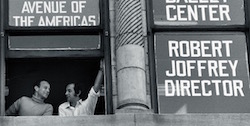
Joffrey and Arpino at JBS window. Photo by Herb Migdoll.
The Gerald Arpino Foundation is also currently seeking international companies willing and able to participate in the festival through dancing an Arpino or Joffrey work this year or next. A contemporary dance company, Dimensions Dance (Miami, FL), has also been licensed the rights to dance Arpino’s Light Rain (1981, and which Fort Wayne Ballet danced last year). Thus, there’s stylistic – and not just geographic – diversity in the companies engaging in the festival.
Estner also explains how the Foundation licenses to ballet schools, university programs and companies at various levels (semi-professional and professional, ranked and non-ranked). So long as the dancers are qualified, the licensing is available. That wide availability is part of the spirit of preserving and honoring the legacies of Robert Joffrey and Gerald Arpino. Thanks to this festival, in 2018 and 2019 that has been, and will be, happening far and wide.
By Kathryn Boland of Dance Informa.


